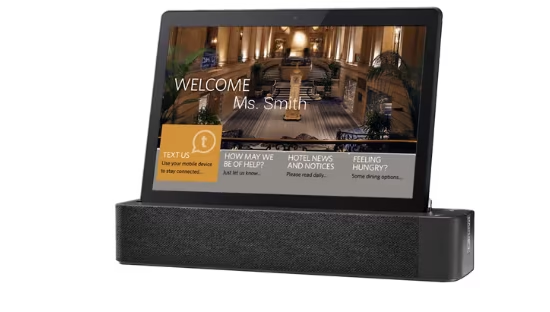
The Missing Layer: Why eSIMs Need to Get Smarter, Not Just Cheaper
We all love a good deal. Who wouldn’t want a €5 eSIM that gives you instant connectivity in Paris, Tokyo, and Buenos Aires? But here’s the catch — after years of obsessing over price tags, we’re starting to realize something big: eSIMs need to get smarter, not just cheaper. smart esim
Let’s talk about the missing layer in the eSIM experience—the intelligence, personalization, and usability that many of us, as frequent travelers or digital nomads, are starting to crave. Because even when the eSIM is cheap, it doesn’t always work the way we need it to.
And it’s not just my experience — travelers everywhere are saying the same.
“It Was Cheap… But I Was Lost.”
Meet Sarah, a freelance photographer from Manchester. She travels around Europe shooting destination weddings and swears by eSIMs — in theory.
“I bought a 10GB plan for €6,” she told me. “Great deal. But I landed in Dubrovnik, scanned the QR code, and nothing. I spent the first two hours hopping between cafés just to get Wi-Fi so I could troubleshoot the setup.”
Her mistake? None. She followed all the instructions. The problem was the eSIM provider didn’t tell her that the network partner in Croatia had spotty coverage in old town areas. No network map, no in-app warning, no real-time support. Just a cheap plan — and a lot of frustration.
This is the core issue: low-cost eSIMs aren’t enough if the experience is poor.
READ MORE: 6 Mistakes To Avoid When Buying An eSIM
The Market is Growing Fast — and Getting Noisier
The global eSIM market is booming. According to Juniper Research, the number of eSIM smartphone connections will hit 1.2 billion by 2027. That means more users, more providers, more offers — and unfortunately, more confusion.
The race right now is mostly about volume and price:
- eSIM providers pushing “global plans” with flashy discounts
- Aggregators listing hundreds of plans with little context
- Mobile operators bundling eSIMs with vague “roam-like-home” promises
But the average traveler doesn’t care about a list of 50 plans. They want the right one — fast, simple, and smart.
What Does “Smarter” Even Mean?
Here’s where we need to shift the conversation. A “smart” eSIM experience is about intelligence, not just infrastructure. It means:
- ✅ Suggesting the best plan based on your real travel itinerary, not a vague region
- ✅ Alerting you when your data is running low or if a local provider has better coverage
- ✅ Supporting dual eSIM usage intelligently (data from one, calls from another)
- ✅ Bundling useful tools like VPN, messaging numbers, or city guides
- ✅ Integrating with wearables or tablets, not just phones
In short, it’s about helping people travel smarter, not just sell them data.
Experts Are Starting to Catch On
I recently spoke with Ana Correia, a telecom consultant who’s been advising mobile operators on eSIM strategy.
“Most eSIM brands are stuck in the 1.0 mindset — price and delivery,” she says. “But we’re entering the 2.0 phase. Context-aware services, AI-powered recommendations, seamless onboarding — that’s the next frontier. It’s not just about data. It’s about trust, convenience, and support.”
And she’s not wrong.
Just like streaming platforms started curating content based on your behavior, why can’t eSIM platforms curate plans based on your actual usage or destinations?
A Look at the Smarter Players
Some eSIM brands are starting to get it — that it’s not just about offering the lowest price, but making the entire experience easier, smarter, and more helpful. Here are a few that are stepping up:
Airalo
Airalo has added real-time usage tracking inside the app, so you can actually see how much data you’ve used and what’s left. It also suggests regional or multi-country plans if you’re crossing borders — a small but smart way to keep travelers connected without switching providers every few days.
aloSIM
aloSIM now offers free trial data in some countries, which is a clever way to let users test the connection before committing. The app includes setup wizards and device checks, making it especially friendly for non-tech-savvy travelers. It’s simple, clear, and gets you connected in minutes.
Nomad eSIM
Nomad has started bundling VoIP number options with certain plans—ideal for people who still need to take calls from home or verify services like banking. The app experience is sleek, and they’re starting to think more holistically about what digital nomads actually need on the road.
Ubigi
Ubigi offers real-time dashboards for tracking usage across all devices—not just phones, but also tablets, laptops, and even cars. They’ve partnered with major automakers, so you’ll often find Ubigi powering in-car Wi-Fi in BMWs, Jeeps, and Fiats. It’s one of the most mature “device-agnostic” eSIM providers out there.
BNESIM
BNESIM goes beyond data. It includes AI-powered chat support, virtual numbers from 100+ countries, and the ability to share data across multiple devices or users. It’s designed for serious travelers or small teams who need more than just a data pipe — they need flexibility and control.
Saily (by NordVPN)
Saily is from the same people behind NordVPN, so privacy is baked in. It offers country-based and global eSIMs, but what makes it smart is the seamless integration with Nord’s ecosystem (VPN, password manager, threat protection). It’s a great option for privacy-conscious digital nomads.
Yesim
Yesim is one of the few providers using AI for auto-switching plans based on your location. It detects when you cross a border and prompts you to switch or activate the best plan in that area. Combined with in-app VoIP calling and chat support, it’s one of the more intelligent systems out there.
GigSky
GigSky is known for its Apple and Windows integration, especially on iPads and laptops. It’s also used by aviation professionals and corporate travelers. With real-time dashboards and a solid reputation for reliability, it’s one of the more enterprise-ready eSIM options.
Maya Mobile
Maya Mobile focuses on unlimited plans with fair-use policies—perfect for remote workers who don’t want to worry about topping up. They also offer developer APIs and platform integrations, making them attractive to tech-savvy travelers or businesses managing remote teams.
Instabridge
Instabridge is building something different—a kind of all-in-one connectivity platform. It uses machine learning to help pick the strongest local signal and also bundles offline maps, Wi-Fi sharing, and even rewards. It’s aiming to be a smart travel app, not just another eSIM provider.
These are tiny steps—but important ones. The ones winning in the long term won’t necessarily be the cheapest but the smartest and easiest to use.
“Give Me Smart, Not Stress.”
Back to the users — let’s hear from Jonas, a UX designer from Berlin who just spent a month working remotely in South America.
“I had three different eSIMs in four weeks,” he said. “Each with a separate app, a separate dashboard, and no way to track data across them. I ended up just turning roaming back on.”
The irony? He was willing to spend €20-€30 more on a single, seamless solution — if it actually worked.
“I don’t need unlimited data. I need something that just works when I open my laptop at the airport.”
We often underestimate this: users will pay more if the product reduces stress. The convenience economy has taught us this again and again. Think Uber, Netflix, Airbnb.
READ MORE: Inside the Secret World of White-Label eSIM Providers: You Think You Know Your eSIM Brand. Think Again.
A Wake-Up Call for eSIM Providers
If you’re in the eSIM business, here’s the truth bomb: being cheap isn’t a unique selling point anymore. Everyone is cheap now.
The real opportunity? Becoming the smart layer between travelers and telecom networks. Think intelligent filters, predictive data needs, support embedded in messaging apps, and real-time signal quality maps.
Imagine:
- You land in Tokyo, and your eSIM app says, “Welcome! We’ve preloaded the local subway map, translator, and emergency numbers for you.”
- Or your phone buzzes: “Your current data plan has 500MB left. Here’s a top-up with the same network — one tap to activate.”
That’s value. That’s stickiness. That’s how you build loyalty.
Final Thought: Don’t Be a Dumb Pipe smart esim
In telecom, being the “dumb pipe”—the infrastructure with no added value—is the worst place to be. Yet many eSIM brands are turning themselves into just that: resellers of generic data.
But there’s still time to change.
Travelers want more than just connectivity. They want confidence, clarity, and context. The brand that delivers a smarter eSIM experience will win their loyalty—and their wallets. smart esim
So next time you’re working on your eSIM offering, ask yourself:
“Am I just cheaper — or actually smarter?”
Because the future of travel connectivity depends on the answer.









